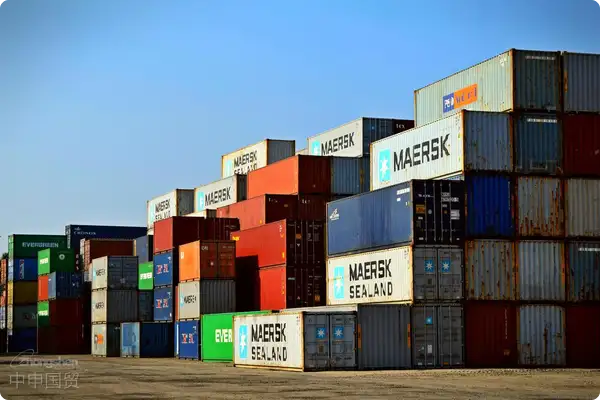- Shanghai Zhongshen International Trade Co., Ltd. - Two decades of trade agency expertise.
- Service Hotline: 139 1787 2118

I. The "Clearance Code" for Importing Precision Instruments
In July 2022, we successfully facilitated the import of a batch of Taiwan-made image measuring instruments through Dongguan Taiping Port. As precision equipment in the measurement field, the import of such products often faces three major challenges: complex HS classification (typically categorized under 9031.49), stringent access requirements for electromechanical products, and special quarantine regulations for wooden packaging. Leveraging our 15 years of accumulated "customs clearance expertise," we ultimately managed to complete the entire clearance process within 18 working days.
In this case, the equipment was packaged with vacuum shock-proof materials, and the outer crate was made of fumigated solid wood (marked with the IPPC logo). We had prepared key documents in advance, including the Certificate of Origin for Taiwan (FORM E) and the equipment technical parameter manual, laying the groundwork for swift customs clearance.
II. The "Time Magic" of Customs Clearance Process
The import process for precision instruments is as meticulous as the instruments themselves:
- Preliminary preparation phase (3 working days): When verifying the declaration elements, special attention was paid to key parameters such as the measurement accuracy of the equipment (0.001mm) and CCD pixels, as these directly affect customs valuation.
- Port operation phase (1-2 working days): As a major import port in Dongguan, Taiping Port has a dedicated inspection area for precision instruments, eliminating the risk of secondary handling.
- Customs inspection phase (15-18 working days): This is the most time-consuming part. We have prepared an equipment principle explanation video in advance to help inspectors quickly understand the product features.
It is particularly noteworthy that, as an optical instrument, the video measuring machine requires detailed optical parameters to be provided during import. The customs declarant with an electromechanical background in our team played a crucial role in this regard.
III. Those Easily Overlooked "Declaration Pitfalls"
Over the years,Equipment ImportsIn practice, we have identified several common issues:
- Wooden packaging quarantine: The new regulations in 2021 require all solid wood packaging to provide fumigation certificates, and we have confirmed in advance that the packaging meets the standards.
- Origin determination: Products from the Taiwan region may enjoy preferential tariff rates under the ECFA Early Harvest List, provided they are accompanied by a complete FORM E certificate.
- 3CCertification Exemption: Industrial measuring instruments are generally eligible for exemption from CCC certification, but a statement of intended use must be provided.
In this case, the technical parameter sheet initially provided by the client lacked a Chinese version. We promptly assisted with translation and notarization, thereby avoiding potential order cancellation risks. This also highlights the key value of choosing a professional agent—proactive problem-solving capability.
IV. The "Four Ounces Shifting a Thousand Pounds" of Customs Clearance Optimization
Through this case, we have summarized the optimization plan for importing precision instruments:
| Process Optimization | Conventional time consumption | Optimized time consumption | Key measures |
|---|---|---|---|
| Documentation preparation | 5 working days | 2 working days | Establish a standard document list |
| Customs price review | 3 Working Days | 1 working day | Prepare transaction records of similar products in advance. |
| Inspection coordination | 20 business days | 15 working days | Pre-recorded Inspection Instruction Video |
Here’s a special detail to share: We advised the client to modify the device's power parameters to the mainland standard of 220V/50Hz. Although this incurred a slight additional cost for the modification, it effectively avoided voltage conversion issues during subsequent usage, earning high praise from the client.
V. The "Hidden Value" of Choosing Professional Agents
In the case of Taiping Port, our professional services have delivered value at three levels:
- Cost control: By applying for the ECFA preferential tariff rate, we saved the client 8% in tariff costs.
- Risk avoidance: Identify potential quarantine risks in packaging in advance to avoid possible losses from return shipments.
- After-sales service: Provide extended services such as import payment and VAT deduction.
Currently, we have established a service network across major ports nationwide, especially in the Pearl River Delta region, enabling multi-port coordination such as Taiping Port and Yantian Port to provide customers with more flexible import solution options.
VI. Practical Suggestions for Importers
For enterprises planning to import precision measurement equipment, we recommend:
- Start preparing import qualification documents 3 months in advance.
- Request the supplier to provide complete technical documentation in both Chinese and English.
- Priority should be given to customs brokers with experience in clearing precision instruments.
- Consider purchasing transportation insurance, especially for high-value equipment.
For high-value equipment like image measuring instruments, every detail in the customs clearance process can impact the final performance. As we often tell our clients: "Quality import services should be as precise as the measurements themselves—down to the last decimal."
If you are planning to import precision instruments, feel free to reach out to us at any time. With 15 years of professional expertise, we can quickly diagnose your import needs and provide the optimal solution.
Related Recommendations
? 2025. All Rights Reserved. Shanghai ICP No. 2023007705-2  PSB Record: Shanghai No.31011502009912
PSB Record: Shanghai No.31011502009912










